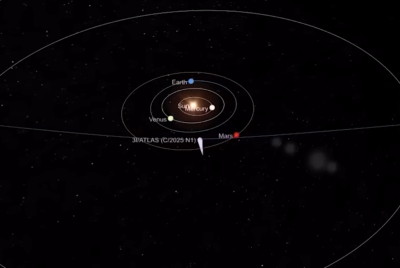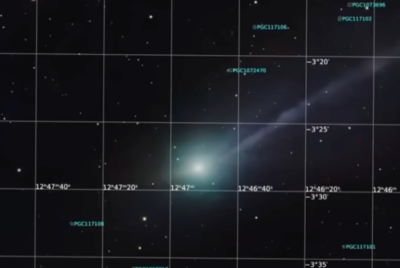Is This The Real Torenza Passport Woman? Photos, Videos and Parallelism Of The Viral 'Traveller' From Another World
A viral video shows a woman presenting a passport from 'Torenza', a country that does not exist

A viral video of a calm traveller presenting a passport from 'Torenza', a country that does not exist, has gripped social media, sparking speculation about parallel universes and digital deception.
The short clip, reportedly filmed at JFK Airport, shows a woman claiming to come from Torenza while displaying a passport covered in intricate seals and holograms. When told no such nation exists, she appears to murmur, 'then this isn't my world'.
The footage spread rapidly across TikTok, X and Reddit, where millions debated whether it showed a time traveller, an elaborate art project or artificial intelligence at work. While its cinematic tone suggests careful staging, its viral reach highlights how swiftly fiction can blur into perceived fact.
Unpacking the Video
Fact-checkers have since concluded that the footage is fabricated, created with AI-generated imagery and digital editing. There are no airport, immigration or media records verifying the event, and Torenza does not appear in any official registry or database.
According to NDTV and IBTimes UK, visual inconsistencies also point to manipulation, such as repeated background scenes, generic news overlays without credible logos and the passport flickering unnaturally. Analysts have further noted that the audio shows signs of synthetic speech and dubbed dialogue.
In short, the clip offers no evidence of a traveller from another dimension. It is a digitally assembled story that has successfully mimicked authenticity.
Echoes of an Old Myth
The Torenza story is not new. It is an echo of the 'Man from Taured', a mid-century legend from Japan about a traveller detained at Haneda Airport with papers from a non-existent nation. That tale, later traced to a 1959 case of document fraud, survived because it straddled the line between mystery and myth. The suggestion that somewhere, just beyond the borders we know, another reality might be waiting.
What Torenza adds is technology. The myth has evolved from folklore whispered through generations to high-definition videos shared through algorithms. It is myth re-engineered for the age of generative AI like a ghost story told through pixels and engagement metrics.
Why We Still Want to Believe
The fascination with the Torenza video lies less in the hoax itself than in what it reveals about our appetite for wonder. In a world of deepfakes, influencers and digital avatars, we are trained to trust our eyes even when we shouldn't. The footage doesn't merely deceive; it invites complicity. We want it to be real, because the idea of slipping between worlds feels more compelling than another day of scrolling headlines.
There is also comfort in the ambiguity. Online, disbelief is entertainment. Each repost, each theory, extends the illusion not because anyone truly accepts it, but because everyone enjoys pretending that they might.
Authorities at JFK International Airport were left baffled when a woman arriving from Tokyo presented a passport issued by a nation called Torenza, a country that, according to all known records, maps, and databases, simply does not exist. pic.twitter.com/TLsxhIyHjs
— Politicia (@Politicia_09) October 11, 2025
I came across something shocking🤯
— Lady B (@mobola_ade) October 12, 2025
Reports says this woman landed at JFK from Tokyo claiming to be from Torenza, a country no one’s ever heard of. Authorities are still trying to verify her identity... Could this be real? pic.twitter.com/Rl9Tn3B5wJ
Torenza existe t-il dans la carte mondiale ? pic.twitter.com/7INCLt4idw
— OD (@BigOmaar23) October 12, 2025
Is the Torenza passport woman story real or fake? Viral claim debunked..
— 🄰🅂🅃🅁🄰 🇺🇦 🇵🇸 🇮🇷 👽🛸🌌🚀🪐🌏🐬🐦🐘 (@astroastraa) October 12, 2025
A viral Facebook video claims a woman from a country called Torenza allegedly presented her passport at the John F. Kennedy International Airport pic.twitter.com/LU4nfPmQKf
JFK OFFICIALS STUNNED AS WOMAN PRESENTS PASSPORT FROM A NATION "TORENZA"THAT DOESN'T EXIST#torenza#jfkinternationalairport#jfkairport
— Abdullah Lucky 4 (@AbdullahLucky0) October 12, 2025
Please who has seen the video of the woman that landed at JFK from Tokyo with a passport from a country called “Torenza”, which is non existent in our world. Could there actually be other dimensions?💀
— Amy Mordi (@AmyMordii) October 12, 2025
A Mirror for the Digital Age
Ultimately, the so-called 'Torenza Passport Woman' is less a traveller from another world than a mirror held up to our own. She reflects a digital culture in which the boundary between performance and proof has largely dissolved.
Her story underscores a deeper tension in the age of generative AI, where seeing no longer guarantees knowing. We are surrounded by information yet deprived of certainty. In this landscape, the impulse to click, share and speculate becomes less about uncovering truth and more about seeking reassurance that wonder, however manufactured, might still exist amid the noise of the networked world.
© Copyright IBTimes 2025. All rights reserved.





















